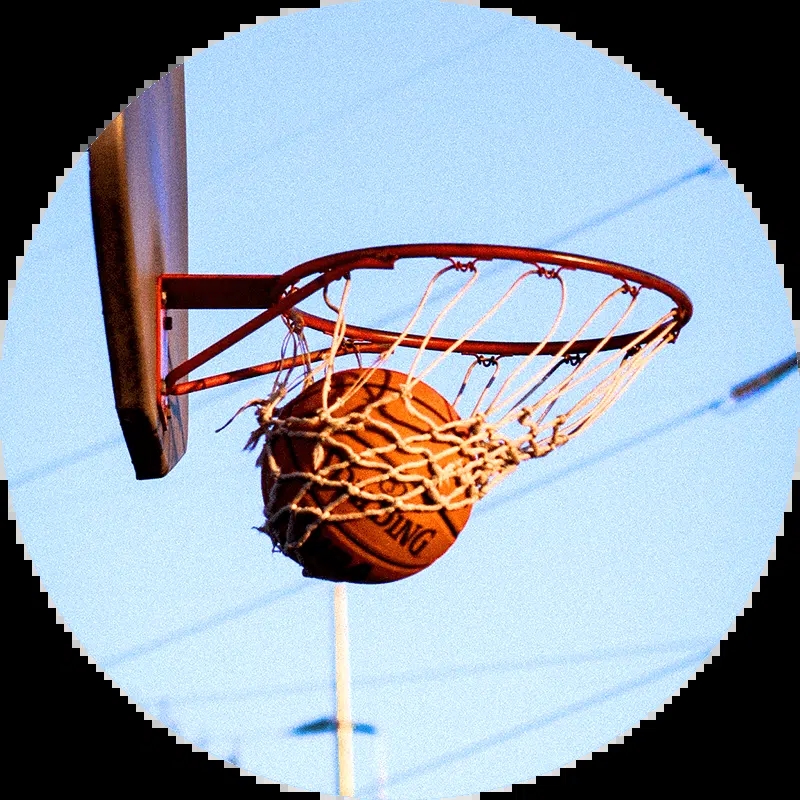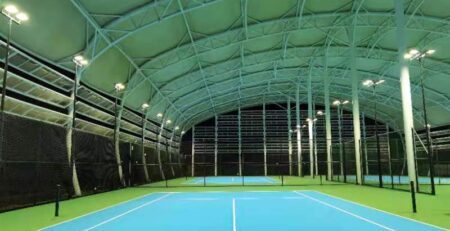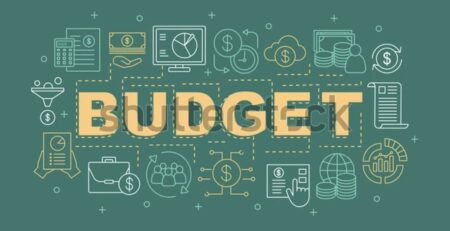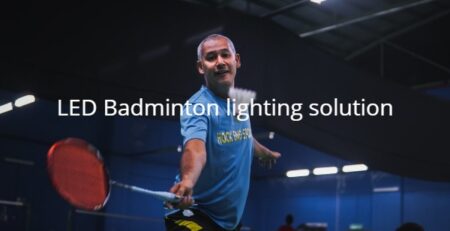Basketball Court Lighting: The Ultimate Guide
Basketball is a sport that captivates fans around the world with its fast-paced action and thrilling moments. While many factors contribute to the overall basketball game experience, one often overlooked aspect is the role of lighting on the court. Proper basketball court lighting not only enhances visibility but also impacts player performance and safety.
Designing basketball court lighting involves considering various factors such as brightness levels, uniformity, color temperature, and glare control. These elements ensure optimal visibility for players, referees, and spectators alike. Well-lit basketball courts provide clear visibility of the ball’s trajectory, players’ movements, and game actions, enhancing both the enjoyment and understanding of the game.
Moreover, adequate illumination on a basketball court directly affects player performance by enabling better depth perception, reaction time, and accuracy. It also plays a crucial role in ensuring player safety by minimizing tripping hazards and reducing the risk of injuries caused by poor visibility.
So let’s dive into how proper illumination can elevate your favorite sport to new heights!

Table of Contents
Importance of Proper Basketball Court Lighting Design
Preventing Shadows and Glare on the Court
Proper basketball court lighting design plays a crucial role in ensuring an optimal playing environment. One of the key aspects is preventing shadows and glare on the court. When players are immersed in intense gameplay, any obstruction or distraction can greatly affect their performance. Shadows caused by inadequate lighting can make it difficult for players to accurately judge the position of their opponents, leading to missed passes or shots.
Glare, on the other hand, occurs when there is excessive brightness that impairs vision. It not only affects players but also referees and spectators. Imagine a scenario where a referee misses a foul due to glare obstructing their view or spectators struggling to follow the game because of blinding lights. By carefully designing basketball court lighting systems, these issues can be minimized, creating an even playing field for everyone involved.
Significance of Uniform Illumination for Fair Gameplay
Uniform illumination across the entire basketball court is essential for fair gameplay. Uneven lighting can create areas with varying levels of brightness, which can significantly impact player performance and fairness during matches. A well-designed lighting system ensures that every corner of the court receives adequate illumination without any dark spots or excessively bright areas.
When players have consistent visibility throughout the court, they can better anticipate movements, make accurate passes, and take precise shots. This promotes fair competition among teams and enhances overall game quality.
Ensuring Adequate Visibility for Players, Referees, and Spectators
Basketball is a fast-paced sport that demands quick reflexes and split-second decision-making from both players and referees. Without proper visibility on the court, it becomes challenging to maintain accuracy in judgments and actions.
Adequate lighting allows players to see each other clearly, enabling seamless teamwork and coordination. Referees rely heavily on visual cues to make critical calls during games; therefore, ensuring they have optimal visibility helps maintain the integrity of the sport.
Moreover, spectators attending basketball matches also benefit from well-designed lighting. They can fully immerse themselves in the game, appreciating every movement and action on the court without straining their eyes. This enhances their overall viewing experience and contributes to a vibrant atmosphere within the arena.
Minimizing Eye Strain and Fatigue with Optimal Basketball Court Lighting
Optimal basketball court lighting not only benefits players, referees, and spectators but also minimizes eye strain and fatigue. Bright lights that are too harsh or dim lights that are insufficient can both have negative effects on vision.
Harsh lighting can cause eye strain, leading to discomfort, headaches, and reduced focus. On the other hand, inadequate lighting forces individuals to strain their eyes in order to see clearly, resulting in fatigue over time. Both scenarios can impact the performance and enjoyment of the game.
By designing basketball court lighting systems that strike a balance between brightness and comfort, eye strain and fatigue can be minimized. This allows everyone involved to fully engage in the game without experiencing unnecessary visual discomfort.
Exploring Different Lighting Solutions for Basketball Courts
Traditional Metal Halide Lights vs. Modern LED Lights for Basketball Courts
There are two primary options to consider: traditional metal halide lights and modern LED lights. Both lighting technologies have their own set of advantages and disadvantages.
Traditional Metal Halide Lights
Traditional metal halide lights have long been the conventional choice for illuminating basketball courts. These fixtures provide bright and powerful lighting that evenly covers the entire court. The high-intensity discharge lamps used in metal halide lights produce a crisp white light, which enhances visibility on the court.
However, there are some drawbacks to using traditional metal halide lights. They consume a significant amount of energy, resulting in higher electricity bills. They require frequent maintenance due to shorter lifespans compared to LED lights. The bulbs need replacement more often, leading to increased maintenance costs over time.
Modern LED Lights
In recent years, LED technology has revolutionized basketball court lighting. LED lights offer numerous benefits that make them an attractive alternative to traditional metal halide lights. One of the key advantages is their superior energy efficiency. LED fixtures consume less electricity while providing bright illumination on the court, resulting in substantial cost savings over time.
LED lights also outshine their metal halide counterparts. With an average lifespan of 50,000 hours or more, LEDs last significantly longer than metal halides. This means fewer bulb replacements and reduced maintenance costs for basketball court owners.
Considering Factors like Energy Efficiency, Maintenance Costs, and Lifespan
When deciding on a lighting solution for an outdoor basketball court, several factors should be taken into account:
- Energy Efficiency: Opting for energy-efficient lighting solutions can help reduce operational costs in the long run.
- Maintenance Costs: Consider the frequency of bulb replacements and associated expenses when choosing a lighting technology.
- Lifespan: Longer-lasting lights require less maintenance and replacement, resulting in lower costs and less downtime.
Customizable Options Available for Specific Court Requirements
Basketball courts come in various sizes and designs, which may require tailored lighting solutions. Lighting design professionals offer customizable options to meet specific court requirements. These options include:
- Adjustable beam angles to ensure optimal light distribution across the entire court
- Different lighting fixtures suitable for various ceiling heights and mounting positions
- Lighting solutions that can be installed on the sides of the court to minimize shadows and improve visibility
By considering these customizable options, basketball court owners can achieve the best possible lighting setup for their specific needs.
LED Lights for Basketball Court Lighting Guide
LED lights have become the preferred choice for illuminating basketball courts due to their numerous benefits and advancements in technology. In this guide, we will explore the advantages of using LED lights, energy-saving features, color temperature considerations, and maintenance tips to maximize performance.
Benefits of using LED lights in basketball court illumination
LED basketball court lighting offers a range of benefits that make it an ideal choice for both indoor and outdoor courts. These benefits include:
- Energy efficiency: LED lights are highly energy-efficient compared to traditional metal halide lights. They consume significantly less electricity while providing ample brightness on the court. This energy efficiency translates into cost savings over time.
- Long lifespan: LED luminaires have an impressive lifespan, lasting up to 50,000 hours or more. This longevity reduces maintenance efforts and costs associated with frequent bulb replacements.
- Enhanced visibility: LED fixtures provide excellent light distribution and uniformity across the entire basketball court. This ensures players can see clearly without any dark spots or uneven lighting, improving safety during games.
- Instant illumination: Unlike metal halide lights that require warm-up time before reaching full brightness, LEDs offer instant illumination when switched on. This feature allows for immediate use without any delays.
Choosing the right color temperature to enhance visibility on the court
When selecting LED basketball court lighting, considering the appropriate color temperature is crucial to optimize visibility and create an ideal playing environment:
- Cool white (5000K-6500K): This color temperature provides bright daylight-like illumination suitable for outdoor courts or well-lit indoor facilities where maximum visibility is essential.
- Neutral white (4000K-5000K): Neutral white lighting offers a balance between cool white and warm white temperatures. It enhances visibility while maintaining a comfortable ambiance for players.
- Warm white (2700K-3500K): Warm white lighting creates a cozy and inviting atmosphere, often used in recreational or practice courts where a softer ambiance is desired.
Maintenance tips for maximizing the performance of LED lights
To ensure optimal performance and longevity of LED basketball court lights, consider the following maintenance tips:
- Regular cleaning: Dust and dirt can accumulate on the light fixtures, reducing their brightness. Clean the luminaires periodically using a soft cloth or brush to remove any debris.
- Inspect for damage: Regularly inspect the lights for signs of damage such as cracks or loose connections. Replace any damaged components promptly to prevent further issues.
- Check for proper alignment: Verify that all LED floodlights are properly aligned to provide uniform illumination across the court. Adjust any misaligned fixtures to eliminate dark spots.
- Monitor dimming capabilities: If your LED lights have dimming capabilities, regularly check and calibrate them according to your desired lighting levels. This allows you to adapt the brightness based on specific game requirements or energy-saving needs.
Illumination Standards and Wattage Range for Basketball Courts
It is essential to consider the recommended illumination levels according to industry standards. Both the NBA (National Basketball Association) and FIBA (International Basketball Federation) have established guidelines to ensure optimal visibility and performance during games.
Recommended Light Levels
Understanding foot-candle measurements and lux levels is crucial in determining the appropriate illumination for a basketball court. Foot-candles refer to the amount of light hitting a specific area, while lux measures the intensity of light on a surface. These measurements help determine the wattage required to achieve the desired brightness.
The recommended illumination levels vary depending on whether it’s an indoor or outdoor court. For indoor courts, both the NBA and FIBA suggest maintaining an average illuminance level of 200-300 lux. On outdoor courts, where natural lighting may be available, a lower average illuminance level of 100-200 lux is often sufficient.
Wattage Range Based on Court Size
To ensure proper lighting coverage across different areas of the court, it’s important to consider the wattage range based on court size. Larger courts require higher wattage fixtures compared to smaller ones. This ensures that all corners of the court are adequately lit without any dark spots affecting gameplay.
Balancing energy efficiency with sufficient brightness is another key factor when selecting basketball court lighting. While higher wattage bulbs provide brighter illumination, they also consume more energy. Therefore, finding a balance between energy efficiency and adequate brightness is crucial for cost-effectiveness and sustainability.
Here are some options for achieving optimal illumination while considering energy efficiency:
- LED Lighting: LED technology has revolutionized sports lighting due to its high energy efficiency and long lifespan. LED fixtures can provide bright illumination while consuming significantly less power compared to traditional options.
- Light Control Systems: Implementing light control systems allows fine-tuning of brightness levels based on specific requirements during practice sessions or official games. This helps conserve energy when maximum brightness isn’t necessary.
- Motion Sensors: Installing motion sensors can automatically adjust lighting levels based on activity on the court. When no one is present, the lights can dim or turn off entirely, reducing energy consumption.
By adhering to industry standards and considering the wattage range, basketball court lighting can be optimized for optimal visibility and performance. Striking a balance between energy efficiency and sufficient brightness ensures a well-lit environment that enhances gameplay while minimizing costs and environmental impact.
Calculating Adjustable Lighting Levels and Operating Costs
Adjustable lighting systems offer a remarkable level of flexibility. These cutting-edge lighting solutions allow you to adjust the light levels according to specific needs, ensuring optimal visibility for players and spectators alike.
Lighting Level Calculations
One crucial aspect to consider when evaluating adjustable lighting options is estimating the operating costs associated with them. By understanding the factors that influence electricity expenses, such as wattage consumption, usage hours, and utility rates, you can make an informed decision that aligns with your budgetary requirements.
To begin calculating operating costs, start by determining the wattage consumption of the chosen lighting system. This information is typically provided by manufacturers and can be found in product specifications or documentation. Once armed with this data, multiply the wattage by the number of hours the lights will be in use each day to obtain daily energy consumption.
Operating Cost Factors
Next, consider utility rates. Electricity prices vary depending on location and provider. Research your local utility rates or consult your energy bill to determine how much you are charged per kilowatt-hour (kWh). Multiply this rate by the daily energy consumption calculated earlier to find out how much you would spend on electricity per day.
It’s important not to overlook maintenance costs when calculating total operating expenses. While adjustable lighting systems generally have longer lifespans compared to traditional alternatives, routine maintenance is still necessary for optimal performance and longevity. Factor in any associated costs such as bulb replacements or professional servicing when estimating overall expenses.
When assessing adjustable lighting solutions’ cost-effectiveness, it’s also essential to consider their energy efficiency. These advanced systems often incorporate dimming capabilities that allow for precise control over light levels based on specific requirements. By adjusting brightness according to need, significant energy savings can be achieved while maintaining adequate illumination levels.
Moreover, color temperature plays a vital role in creating an ideal basketball court ambiance. Adjustable lighting systems offer various color temperature options, allowing you to customize the lighting experience. For example, cooler color temperatures can enhance focus and visibility during intense gameplay, while warmer tones create a more inviting atmosphere for spectators.
Beyond cost considerations, it’s crucial to evaluate the return on investment (ROI) when selecting adjustable lighting solutions. While these systems may involve higher upfront expenses compared to traditional setups, their long-term benefits often outweigh the initial investment. Reduced energy consumption and lower maintenance requirements contribute to significant savings over time.
Outdoor Basketball Court Lighting: Standards, Flood Light Recommendations, and Pole Requirements
Meeting outdoor basketball court lighting standards
It is essential to adhere to the appropriate lighting standards. The Illuminating Engineering Society of North America (IESNA) provides guidelines that ensure optimal visibility and safety on the court. These standards take into account factors such as light levels, uniformity, glare control, and color rendering.
To meet IESNA standards for outdoor basketball court lighting, consider the following:
- Light Levels: Aim for a minimum average illuminance level of 50 foot-candles on the playing surface. This ensures players have sufficient visibility to track the ball and make accurate shots.
- Uniformity: Achieving uniform illumination across the entire court is crucial to minimize shadows and provide consistent lighting conditions.
- Glare Control: Properly designed fixtures with shielding mechanisms help reduce glare that can hinder players’ vision.
- Color Rendering: Selecting high-quality lights with good color rendering properties enhances visibility by accurately representing colors on the court.
Recommended flood light options for optimal outdoor illumination
Flood lights are a popular choice for outdoor basketball court lighting due to their ability to provide wide-angle illumination. Here are some recommended flood light options:
- LED Flood Lights: LED technology offers energy efficiency, long lifespan, and excellent brightness control. They also produce little heat compared to traditional options.
- Metal Halide Flood Lights: Metal halide lamps deliver bright white light and are suitable for large outdoor areas like basketball courts. However, they require a warm-up period before reaching full brightness.
- High-Pressure Sodium Flood Lights: These lights emit a warm yellowish glow and are known for their high energy efficiency. However, they have longer warm-up times compared to other options.
- Induction Flood Lights: Induction lamps offer good color rendering and a long lifespan while consuming less energy. They are a reliable choice for outdoor basketball court lighting.
Factors to consider when selecting lighting poles
Choosing the right lighting poles is crucial for ensuring the proper positioning and stability of the flood lights. Consider the following factors:
- Height: The height of the light poles should be carefully determined to achieve optimal illumination without creating excessive glare or shadows. Typically, a height range of 20-30 feet is suitable for outdoor basketball courts.
- Stability: Ensure that the selected light poles are sturdy enough to withstand environmental conditions such as wind, rain, and even accidental impacts from balls during play.
- Material: Light poles made from durable materials like steel or aluminum offer better longevity and resistance against corrosion.
- Mounting Options: Evaluate different mounting options such as direct burial or base plate mounting depending on the court’s specific requirements and location.
Weatherproofing measures for long-lasting outdoor lighting systems
To ensure the longevity and reliability of your outdoor basketball court lighting system, it is essential to implement weatherproofing measures:
- Enclosures: Use weatherproof enclosures for electrical connections and components to protect them from moisture, dust, and other environmental elements.
- Gaskets and Seals: Install gaskets and seals in fixtures and junction boxes to prevent water ingress.
- Surge Protection: Incorporate surge protection devices to safeguard the lighting system against power surges caused by lightning strikes or electrical fluctuations.
Conclusion
Enhancing the Game with Optimal Basketball Court Lighting
Proper basketball court lighting design is crucial for creating an optimal playing environment. We discussed the importance of illumination standards and wattage range to ensure sufficient brightness without causing glare or shadows. We delved into calculating adjustable lighting levels and operating costs to help you make informed decisions.
Enkarl provided detailed information about standards, flood light recommendations, and pole requirements. By following these guidelines, you can enhance visibility on the court while minimizing energy consumption and maintenance costs.
In conclusion, investing in high-quality basketball court lighting not only improves safety but also enhances the overall game experience. Whether you’re a professional team or a recreational facility, choosing the right lighting solution is essential for players’ performance and spectators’ enjoyment. Consider implementing our recommendations to create a well-lit environment that meets industry standards.
FAQs
What are the advantages of LED lights for basketball court lighting?
LED lights offer numerous benefits for basketball court lighting. They provide superior energy efficiency compared to traditional lighting options and have a longer lifespan, reducing maintenance costs. LED lights also offer better color rendering and uniformity of light distribution, ensuring optimal visibility on the court.
How do I calculate adjustable lighting levels for my basketball court?
To calculate adjustable lighting levels, consider factors such as required illuminance levels (measured in lux), mounting height of fixtures, beam angle of the lights used, and any specific regulations or standards applicable to your location.
Are there any recommended flood light options for outdoor basketball courts?
Yes! High-output LED floodlights are often recommended due to their ability to provide ample illumination over large areas while being energy-efficient and durable.
What are the typical illumination standards for basketball courts?
Illumination standards for basketball courts vary depending on the level of play and the governing body. However, a common guideline is to aim for an average illuminance level of 200-300 lux.
Can I retrofit my existing basketball court lighting system with LED lights?
Yes, it is possible to retrofit your existing lighting system with LED lights. However, it is essential to ensure compatibility and consult with a professional to determine if any modifications are needed for optimal performance and energy efficiency.




